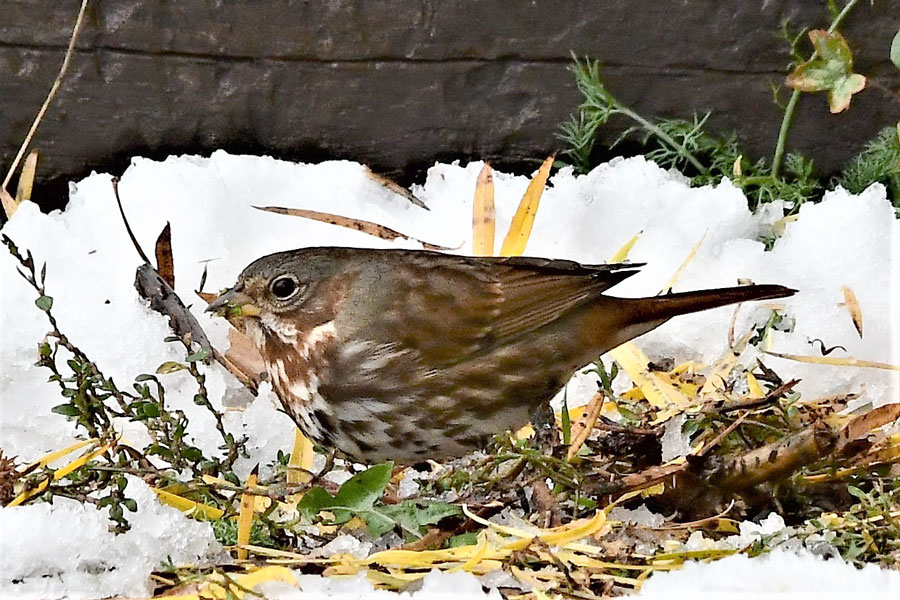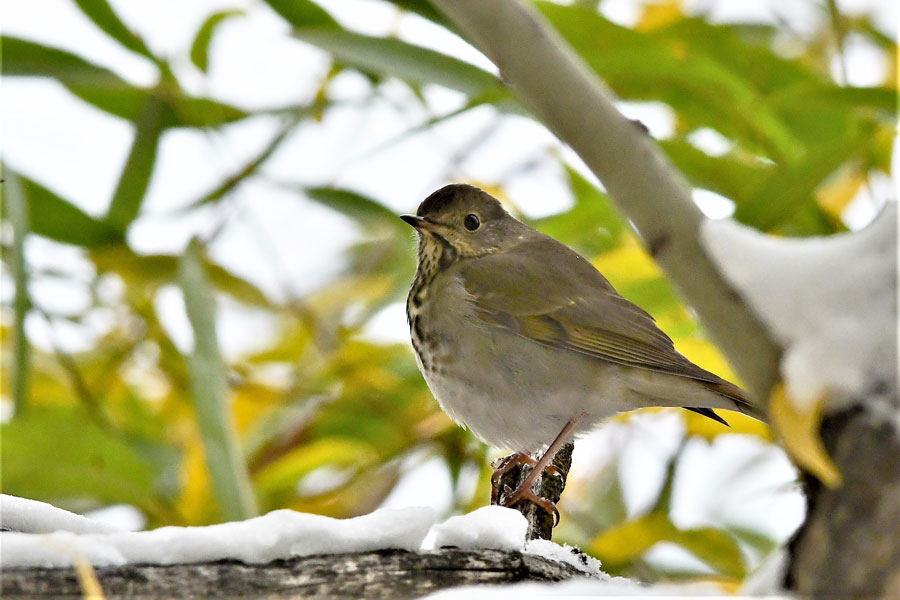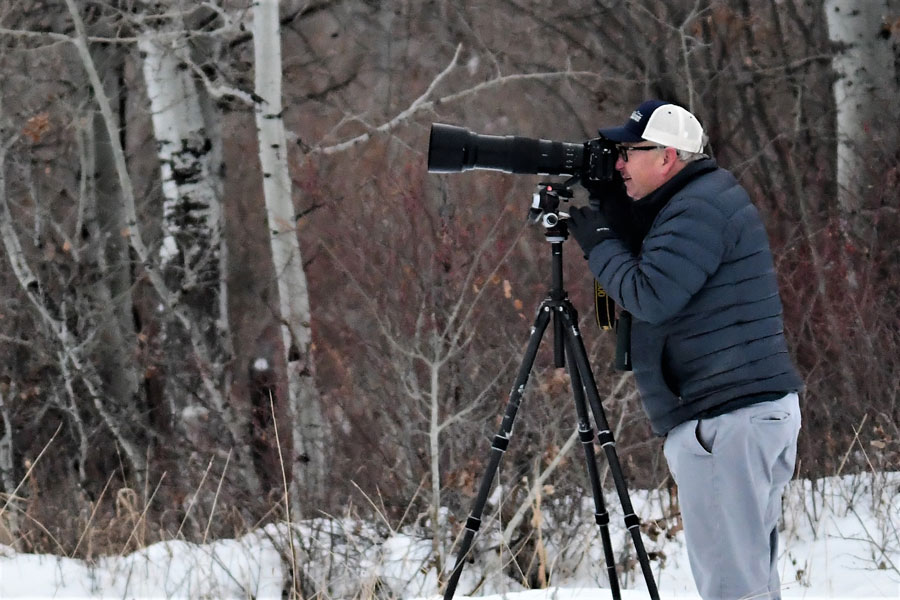A look at a rare bird that showed up near Rexburg
Published at
“Bill, your Hermit Thrush photo is actually a Fox Sparrow. It’s actually the eastern subspecies (Red Fox Sparrow). It’s very rare in Idaho. Cool bird for sure.” Darren.
Darren Clark wrote this email to me after reading my last week’s article about getting your feeders out for wintering birds.
Everyone needs a Darren Clark in their life – keeps you on the straight and narrow in the birding world. He and his birding partner, Steve Butterworth, are professional birders among us amateurs who have trouble identifying “one little brown bird from another.”
I had never heard of a Fox Sparrow, let alone, a Red Fox Sparrow and the bird that I had photographed in the snow storm on Oct. 12, looked like and acted like a Hermit thrush to me. Earlier that morning I had photographed two Hermits at Camas National Wildlife Refuge and this bird had the spotting on its chest, a rust-colored tail and was feeding on the ground like the Hermits had been doing.

But I had not paid enough attention in the details of the spotting and the coloring of the bird even though it stayed in my backyard for three days.
“When I saw your picture of the sparrow, I noticed the rich red chevrons on the chest and the yellow coloring in its bill,” Clark told me. “The Red Fox Sparrow is a distinctive sub-specie that nests in Canada and winters along the East Coast.”
It was a long way from home and since 2002, the Idaho Bird Records Committee have only verified the existence of one Red Fox Sparrow in Idaho and that bird was found and photographed by Clark in September 2020 at Market Lake. Clark serves on the committee of seven expert birders across Idaho who verifies the existence of rare and unusual birds.
Submissions are posted on “Idaho Bird – Home of Idaho Birding.” Clark has encouraged me to make a rare bird submission to the records committee so the bird can be officially recognized for being in Idaho.

One of the important things about feeding birds in our backyards is that rare birds or bird migration changes can be documented by common folks and then used by scientists. This is important as changes in bird movement and numbers can indicate environmental problems. It is interesting to note that every verified sighting of Fox Sparrows in Idaho has occurred in the fall months.
“Migrating birds are often blown off course during storms,” said Clark
So, in my haste to get some pictures to illustrate the article on feeding birds, I captured pictures of a rare bird, but failed to identify it properly. That is an unforgivable sin in the official birder’s world, unless you have a Darren Clark looking out for you. I was excited to record my first Hermit thrush in my backyard, instead I ended up with a “lifetime bird” that will probably be officially recognized as only the second Red Fox Sparrow recorded in Idaho.
“I just wanted you to know that you had a much better bird than a thrush,” Clark said to me. “Is the bird still around?”
“Nope; it left on Oct. 15, with some juncos and an American tree sparrow,” I replied.
“Is that the other sparrow in the picture?” “Yup.”
“That tree sparrow is actually an immature White-crowned sparrow!”

Oh, those little brown birds are still confusing the heck out of me!! I guess I need more practice and to study a little harder. I’m just lucky to have Clark around for me to try his patience.
If any of you are seeing strange birds at your feeders, try to get pictures of them and send them to the East Idaho News or to me at: bschiessphoto@gmail.com and we will try to get them identified for you.
Also, some of the people feeding birds have not seen any Blue Jays this fall. Last year they were quite common but this year they seem to be missing. If you have seen some, let me know.
Living the Wild Life is brought to you by The Healing Sanctuary.


